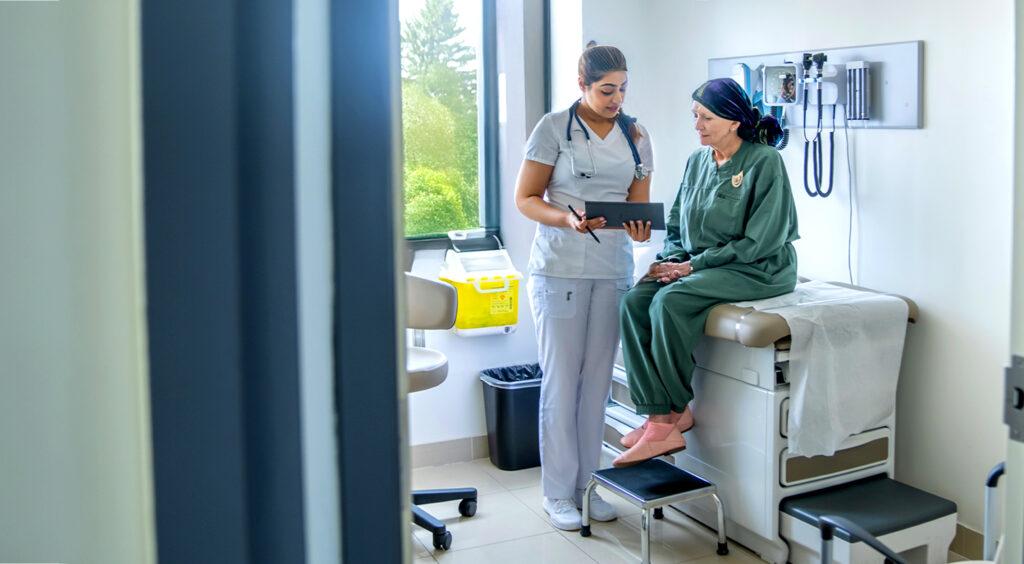5 tips for staying cool at home without air conditioning
By Carolyn Ali

Natural cooling strategies practised in hot climates can help
Some Canadians are just learning what’s considered common knowledge to others who have experienced daily life in hotter climates: there’s much you can do to cool down your home and yourself without air conditioning.
Dr. Jennifer Baumbusch, a professor at the UBC School of Nursing, says many of these strategies are easy to adopt. However, she cautions, every home and person is different. “Research has shown that above certain temperatures, fans can’t effectively reduce body temperatures or prevent heat-related illnesses in people at risk,” she says. She advises people to identify their risk before a heat wave and plan for how to stay cool.
In moderate heat, strategic use of shading and fans, and modifying your daily routines can help. Here are five tips from Dr. Baumbusch and other UBC experts on how to stay cool at home.
1. Close your windows and blinds during the day
West Coast housing wasn’t built for today’s hotter summers, says Dr. Adam Rysanek, an associate professor at UBC’s School of Architecture and Landscape Architecture. Every space is different, and while some now require air conditioning, others can be cooled substantially with the right fan, shading and airflow strategy.
“It sounds counterintuitive, but the moment the outdoor temperature gets above your indoor temperature, you want to close off your building so it doesn’t heat up your space,” explains Dr. Rysanek. Then, in the evening, open the windows to get the fresh air flowing.
He acknowledges that this strategy may not work well for spaces that get loads of sun and trap heat like a greenhouse early in the day. “But more often than not, you might find that things are cooler inside by closing your windows, or at least giving it a try.”
PreparedBC’s Extreme Heat Preparedness guide recommends keeping doors and windows closed from 10 a.m. and re-opening them at 8 p.m.
2. Use two fans for better air circulation
Most people know to create a cross-breeze by opening windows on opposing walls. But if your apartment only has windows on one side, it can act like a balloon, pressurizing incoming hot air.
“Air is almost like a river,” Dr. Rysanek explains. “It needs to have a place to flow in and out. And it’s unlikely to flow in one window and out the other window on the same streetscape unless you tell it to do so.”
You can direct airflow with fans. “If you have two windows, having one fan at one window pushing air out and another at the other window pulling air in will induce a bit of a circulation.”
3. Try an evaporative cooler
Evaporative coolers, also known as swamp coolers, blow air over water, which then evaporates. Air coolers are a widespread, less expensive alternative to air conditioning in South Asia, says Dr. Milind Kandlikar, a professor at UBC’s Institute for Resources, Environment and Sustainability whose work focuses on the intersection of technology, climate and development.
Dr. Kandlikar explains that air coolers in South Asia filter water through a thatched material and then blow air through. “If it’s a dry heat, it cools the air,” he says. “The challenge is humidity. They don’t work well in humid conditions.”
DIY versions of evaporative coolers are relatively easy to build. Dr. Rysanek recalls making one himself 10 years ago from about $20 of hardware store materials to keep him cool in his Vancouver apartment. “For those who need urgent cooling and are budget-constrained, they can be more effective than using a fan alone,” he says. But we need to change our housing design to build in long-term solutions for our hotter future.
4. Modify your cooking and cleaning routines
Most people would rather not fire up the oven when it’s hot inside. But don’t forget that turning on the stove can also increase indoor temperatures. If you know hot weather is coming, and you prefer cooked meals to cold options, Dr. Baumbusch advises prepping meals in advance and then warming food in the microwave.
She notes that housework can also be hot. Consider delaying physical activity such as vacuuming until temperatures cool.
5. Modify your personal care routines
If you’re used to showering in the morning, consider a cool bath or shower in the day or evening instead. To stay cool at home in between, Dr. Baumbusch recommends putting a wet cloth or ice pack in the freezer and then wrapping it around your neck. Drink plenty of water to stay hydrated as well.
You might not know that some medications can interfere with your body’s ability to stay cool. If you take many medications, or are concerned about interactions between your medications and extreme heat, Dr. Baumbusch suggests asking your pharmacist to review your prescriptions.
Learn how to cool your neighbourhood
Carolyn Ali is a writer for UBC Brand and Marketing. This article was published on June 7, 2024. Feel free to republish the text of this article, but please follow our guidelines for attribution and seek any necessary permissions before doing so. Please note that images are not included in this blanket licence.


